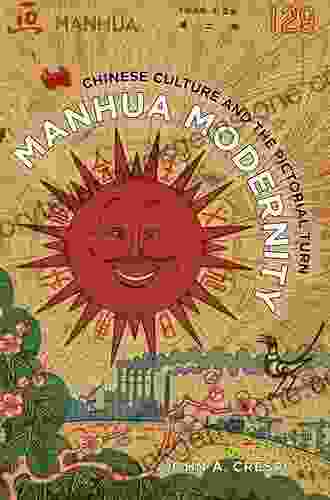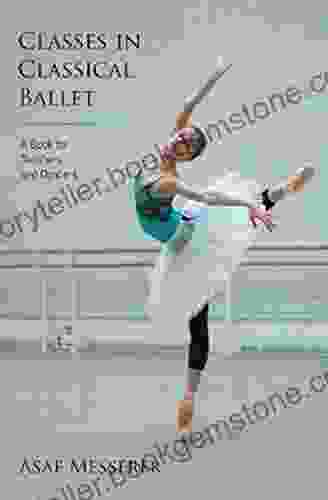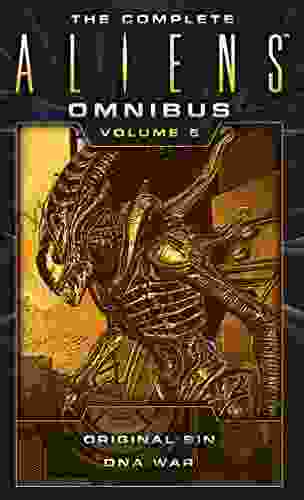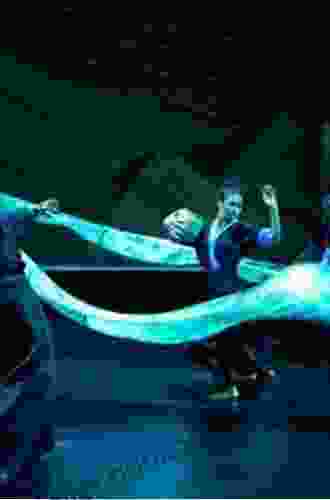Manhua Modernity: The Transformative Role of Chinese Culture and the Pictorial Turn

The emergence of manhua, Chinese comics, in the late 19th century marked a significant turning point in the development of Chinese culture and society. As a new and vibrant form of visual expression, manhua played a crucial role in shaping the cultural landscape of modern China, mediating between tradition and modernity, East and West. This article explores the manifold ways in which manhua has both reflected and influenced Chinese modernity, focusing on its unique pictorial qualities and its engagement with the social, political, and cultural transformations of the time.
The Pictorial Turn and the Rise of Manhua
The late 19th century witnessed a profound "pictorial turn" in Chinese culture, characterized by the rise of new visual technologies and practices. This period saw the of photography, film, and illustrated periodicals, which transformed the ways in which people consumed and produced visual content. The advent of print culture further facilitated the dissemination of images and visual narratives, contributing to the popularization of manhua.
4 out of 5
| Language | : | English |
| File size | : | 18342 KB |
| Text-to-Speech | : | Enabled |
| Screen Reader | : | Supported |
| Enhanced typesetting | : | Enabled |
| Print length | : | 329 pages |
| Lending | : | Enabled |
Manhua emerged as a distinct genre of visual storytelling in the late 1800s, drawing inspiration from both traditional Chinese painting and Western cartoons. Early manhua artists such as Feng Zikai and Zhang Leping blended traditional Chinese aesthetics with Western drawing techniques, creating a unique and innovative form of visual expression. The pictorial qualities of manhua, with its dynamic lines, vivid colors, and engaging narratives, captured the attention of a wide audience, quickly becoming a popular form of entertainment and artistic expression.
Manhua as a Mirror of Society
Modern Shanghai and Hong Kong served as the major hubs for manhua production and consumption. These cosmopolitan cities were at the forefront of modernity in China, witnessing rapid urbanization, political upheavals, and cultural transformations. Manhua artists deftly captured the social and cultural landscape of these cities, using their art to reflect on the changing realities of modern Chinese society.
Manhua delved into themes of social inequality, political corruption, and the challenges of everyday life. Artists such as Ye Qianyu and Wang Luyan employed satirical and humorous approaches to critique social injustices and expose social problems. Through its vivid imagery and engaging narratives, manhua became a powerful tool for social commentary, shaping public opinion and contributing to the formation of a modern Chinese consciousness.
Manhua and the Cultural Exchange between East and West
Manhua also played a significant role in mediating the cultural exchange between China and the West. As China opened up to the world in the late 19th century, Western influences flooded into the country. Manhua artists eagerly embraced these new ideas and techniques, incorporating Western elements into their work. They experimented with different drawing styles, narrative structures, and artistic conventions, creating a hybrid visual culture that reflected the dynamic interplay between Chinese and Western influences.
Moreover, manhua served as a vehicle for translating Chinese culture abroad. Manhua artists such as Zhang Leping and Hua Junwu introduced Chinese themes and characters to international audiences. Their work garnered acclaim and popularity overseas, contributing to the dissemination of Chinese culture beyond its borders.
Manhua as a Political Tool
In times of political turmoil and social transformation, manhua became a potent tool for political expression. During the Republican era, various political factions used manhua to spread their ideologies and mobilize the masses. Nationalist and Communist manhua artists produced compelling narratives that shaped public opinion and influenced political discourse.
During the Cultural Revolution, manhua was subject to strict ideological control. Artists were required to produce propaganda comics that glorified the revolutionary cause and denounced the bourgeoisie and Western influences. However, even within these constraints, some artists managed to find ways to express their individuality and critique the excesses of the political regime.
Manhua, as a vibrant and evolving form of visual storytelling, has played a multifaceted role in shaping the cultural landscape of modern China. Its pictorial qualities, mediating between tradition and modernity, East and West, have allowed manhua to reflect and influence the social, political, and cultural transformations of the time. As a mirror of society, a medium for cultural exchange, and a tool for political expression, manhua has left an indelible mark on the history and development of modern Chinese culture.
In recent years, manhua has continued to thrive and evolve, embracing new technologies and artistic styles. Contemporary manhua artists continue to draw inspiration from both traditional Chinese aesthetics and global influences, creating a dynamic and diverse range of visual narratives that reflect the complexities of modern Chinese society. As manhua enters its second century, it remains a vital and influential force in shaping the cultural landscape of China and beyond.
4 out of 5
| Language | : | English |
| File size | : | 18342 KB |
| Text-to-Speech | : | Enabled |
| Screen Reader | : | Supported |
| Enhanced typesetting | : | Enabled |
| Print length | : | 329 pages |
| Lending | : | Enabled |
Do you want to contribute by writing guest posts on this blog?
Please contact us and send us a resume of previous articles that you have written.
 Best Book
Best Book Page Flip
Page Flip Bookshelf
Bookshelf Literary loom
Literary loom Chapter
Chapter Bookish
Bookish PageTurner
PageTurner Bibliophile
Bibliophile Story
Story Inkwell
Inkwell Bookworm
Bookworm Labyrinth
Labyrinth Plot Twist
Plot Twist Prose
Prose Paperback
Paperback Storyteller
Storyteller Sanctuary
Sanctuary Fiction
Fiction Reading
Reading Chronicle
Chronicle Read
Read Jay Boyce
Jay Boyce Avanti Centrae
Avanti Centrae Ken Seeroi
Ken Seeroi Miss Jenesequa
Miss Jenesequa Chloe Fox
Chloe Fox Michael Chatfield
Michael Chatfield Keller Easterling
Keller Easterling Robert Dugoni
Robert Dugoni Arrigo Cipriani
Arrigo Cipriani Anwei Skinsnes Law
Anwei Skinsnes Law Anton Roux
Anton Roux Kyunghee Pyun
Kyunghee Pyun Koji A Dae
Koji A Dae Jason Louis
Jason Louis Janet Farnsworth
Janet Farnsworth Betty Reynolds
Betty Reynolds Jun Maeda
Jun Maeda Avery Blake
Avery Blake Frank Conroy
Frank Conroy Sue Miller
Sue Miller Mary Ann Scott
Mary Ann Scott Jaime Castle
Jaime Castle Jan Morris
Jan Morris Hannah Arendt
Hannah Arendt Anthony Ryan
Anthony Ryan Todd Barry
Todd Barry Woody Allen
Woody Allen Elizabeth David
Elizabeth David Sheila O Flanagan
Sheila O Flanagan Gina Rossi Armfield
Gina Rossi Armfield Jane Monteith
Jane Monteith James Rosone
James Rosone Jay Allan
Jay Allan Kaitlyn Greenidge
Kaitlyn Greenidge Kim Erwin
Kim Erwin Ari Seth Cohen
Ari Seth Cohen M N Forgy
M N Forgy Eric Broudy
Eric Broudy Maria Venegas
Maria Venegas Valerie Mckeehan
Valerie Mckeehan John E Siers
John E Siers Saeed Jones
Saeed Jones Anton Chekhov
Anton Chekhov Joan Bess
Joan Bess W A Bentley
W A Bentley B B Thatcher
B B Thatcher Bill White
Bill White Annette Dozier
Annette Dozier Stephan Talty
Stephan Talty Annemarie Strehl
Annemarie Strehl Annette Insdorf
Annette Insdorf Leokadia Schmidt
Leokadia Schmidt Anthony M Strong
Anthony M Strong Kalyn Franke
Kalyn Franke John H Groberg
John H Groberg Edgar Rice Burroughs
Edgar Rice Burroughs Pearl Howie
Pearl Howie Nathan Deuel
Nathan Deuel Davida Schulman
Davida Schulman Ava Archer
Ava Archer Apsley Cherry Garrard
Apsley Cherry Garrard Darby English
Darby English Linda Nagata
Linda Nagata Arthur C Danto
Arthur C Danto Eric Warren
Eric Warren Karen Ordahl Kupperman
Karen Ordahl Kupperman Aziz Shihab
Aziz Shihab Arthur Conan Doyle
Arthur Conan Doyle Meyer Berger
Meyer Berger Ray Bradbury
Ray Bradbury Marlene Wagman Geller
Marlene Wagman Geller Jim Steinmeyer
Jim Steinmeyer Quentin Tarantino
Quentin Tarantino Sarah Winnemucca Hopkins
Sarah Winnemucca Hopkins Colby Buzzell
Colby Buzzell Beverly Galeskas
Beverly Galeskas W Michael Blumenthal
W Michael Blumenthal Laura Davis Chanin
Laura Davis Chanin Jay Caspian Kang
Jay Caspian Kang Anthony James
Anthony James Vanessa Hua
Vanessa Hua Arthur Miller
Arthur Miller T R Todd
T R Todd Scott M Madden
Scott M Madden Michael Kimmelman
Michael Kimmelman Gail Morin
Gail Morin Michael Betancourt
Michael Betancourt Deborah Paris
Deborah Paris Tamron Hall
Tamron Hall Br Kingsolver
Br Kingsolver New Edition Kindle Edition
New Edition Kindle Edition B Ruby Rich
B Ruby Rich Patricia Williams
Patricia Williams Regina Held
Regina Held Christine Denniston
Christine Denniston Maureen T Corrigan
Maureen T Corrigan Annette Gordon Reed
Annette Gordon Reed Noy
Noy Stephen Moss
Stephen Moss John Izbicki
John Izbicki Anne Mccaffrey
Anne Mccaffrey Rivers Solomon
Rivers Solomon Anne Keenan Higgins
Anne Keenan Higgins Karen A Romanko
Karen A Romanko Talia Beckett
Talia Beckett Franklin Horton
Franklin Horton Ariel Dorfman
Ariel Dorfman Joe Russo
Joe Russo Oliver Mayes
Oliver Mayes Ashley K Stoyanov Ojeda
Ashley K Stoyanov Ojeda Martin Kemp
Martin Kemp Bear Heart
Bear Heart Pamela Cutter
Pamela Cutter Scott Westerfeld
Scott Westerfeld Tracy Franz
Tracy Franz Arleta Pech
Arleta Pech Charles Nordhoff
Charles Nordhoff Claire Devarrieux
Claire Devarrieux Margaret Walker
Margaret Walker Austin Channing Brown
Austin Channing Brown Joan Tollifson
Joan Tollifson Tara Wells
Tara Wells Jason Waguespack
Jason Waguespack Pat Cadigan
Pat Cadigan S H Jucha
S H Jucha Smauggy Universe
Smauggy Universe Elena M Watson
Elena M Watson Pat Hall
Pat Hall Robert Beverly Hale
Robert Beverly Hale Kirsten Anderson
Kirsten Anderson Sarah Vallance
Sarah Vallance Linda Furiya
Linda Furiya Ashlee Vance
Ashlee Vance Riva Lehrer
Riva Lehrer Doug Peterson
Doug Peterson Tiffany Roberts
Tiffany Roberts Anthony David
Anthony David Binka Le Breton
Binka Le Breton Arne Dehli
Arne Dehli Anne Green Gilbert
Anne Green Gilbert Ashleynicole
Ashleynicole Philip Tyler
Philip Tyler Tay Mo Nae
Tay Mo Nae Carne Griffiths
Carne Griffiths Kao Kalia Yang
Kao Kalia Yang Caroline Montague
Caroline Montague Martin Cruz Smith
Martin Cruz Smith John Woolf
John Woolf Asimina Nteliou
Asimina Nteliou Bernadette Murphy
Bernadette Murphy Anthea Sharp
Anthea Sharp Matthew A Goodwin
Matthew A Goodwin John Davidson
John Davidson Antonia Fraser
Antonia Fraser Ashley Jaquavis
Ashley Jaquavis Yasmin Angoe
Yasmin Angoe Christopher Simmons
Christopher Simmons Nicholas Sansbury Smith
Nicholas Sansbury Smith Cathy Curtis
Cathy Curtis King Ellie
King Ellie Pankaj Mishra
Pankaj Mishra Morgan Rogers
Morgan Rogers Art Wolfe
Art Wolfe Jodi Ohl
Jodi Ohl Joseph Mcbride
Joseph Mcbride Beth Haslam
Beth Haslam Lorraine Caputo
Lorraine Caputo Yuk Hui
Yuk Hui Xiaolu Guo
Xiaolu Guo Robert D Kaplan
Robert D Kaplan Howard Dully
Howard Dully Jan Murphy
Jan Murphy R A Lafferty
R A Lafferty David E Stannard
David E Stannard Mark Baskinger
Mark Baskinger Steven Bradley
Steven Bradley George Rathmell
George Rathmell Asaf Messerer
Asaf Messerer Brian W Smith
Brian W Smith Arthur Bartow
Arthur Bartow Eileen Mcnamara
Eileen Mcnamara Vladimir London
Vladimir London Ashley Brantley
Ashley Brantley Anthony M Amore
Anthony M Amore Karen Mccartney
Karen Mccartney Jt Sawyer
Jt Sawyer Rob Schmitz
Rob Schmitz Chris Cozen
Chris Cozen Lena Grey
Lena Grey Michael Fleishman
Michael Fleishman Dirk Hayhurst
Dirk Hayhurst Ar Corbin
Ar Corbin J R Osborn
J R Osborn Christopher Griffin
Christopher Griffin Jeffrey Vonk
Jeffrey Vonk Wade Motawi
Wade Motawi Anton Hager
Anton Hager Joseph Birchall
Joseph Birchall Anne Hillerman
Anne Hillerman Destiny Davis
Destiny Davis Lorna Luft
Lorna Luft Anne Frank
Anne Frank Ruth Wariner
Ruth Wariner Shugri Said Salh
Shugri Said Salh Detlev Henschel
Detlev Henschel Thomas M Hill
Thomas M Hill Prenisha Aja
Prenisha Aja Ansel Adams
Ansel Adams Dennic Chunman Lo
Dennic Chunman Lo Gloria Mattioni
Gloria Mattioni Robert J Serling
Robert J Serling Brendan Edwards
Brendan Edwards Anne Richardson Williams
Anne Richardson Williams David Larocca
David Larocca Sonia Misra
Sonia Misra Tony Peak
Tony Peak Ron Stocke
Ron Stocke Sara Paretsky
Sara Paretsky Kevin Mannens
Kevin Mannens Jean Guerrero
Jean Guerrero Nick Cole
Nick Cole Jose Antonio Salgado Alonso
Jose Antonio Salgado Alonso Angela Y Davis
Angela Y Davis Richard Killeen
Richard Killeen Nnedi Okorafor
Nnedi Okorafor Tamar Diana Wilson
Tamar Diana Wilson Olive Collins
Olive Collins Laurel Ann Francis
Laurel Ann Francis Annemarie Bean
Annemarie Bean Magi Nams
Magi Nams Anthony Ryder
Anthony Ryder Maxine Leeds Craig
Maxine Leeds Craig Jasper T Scott
Jasper T Scott Vernor Vinge
Vernor Vinge Owen Jones
Owen Jones Debbie Macomber
Debbie Macomber Brian Butko
Brian Butko Ursa Dax
Ursa Dax Walt Bachman
Walt Bachman Myrnoska Scott
Myrnoska Scott Jacqueline Rayner
Jacqueline Rayner N L Hudson
N L Hudson Richard Pikesley
Richard Pikesley Barbara Demarco Barrett
Barbara Demarco Barrett Wesley B Turner
Wesley B Turner Marta Mcdowell
Marta Mcdowell Annie Keary
Annie Keary Howling Moon Books
Howling Moon Books Rebecca Kaye
Rebecca Kaye Arthur H Buckley
Arthur H Buckley Wakefield Poole
Wakefield Poole Juliette Sobanet
Juliette Sobanet John Triptych
John Triptych Atsons
Atsons Margaret Scott
Margaret Scott Carl Stubblefield
Carl Stubblefield Fig Taylor
Fig Taylor Eric Campbell
Eric Campbell Anthony J Melchiorri
Anthony J Melchiorri Oscar Zeta Acosta
Oscar Zeta Acosta Anthony C Winkler
Anthony C Winkler Rosemary Sullivan
Rosemary Sullivan B Russell Mcconkie
B Russell Mcconkie Arielle Silverman Ph D
Arielle Silverman Ph D Artemisia Gentileschi
Artemisia Gentileschi Chawadee Nualkhair
Chawadee Nualkhair John A Crespi
John A Crespi Lutishia Lovely
Lutishia Lovely Waldo Rodriguez
Waldo Rodriguez Michael Jan Friedman
Michael Jan Friedman David Consuegra
David Consuegra Benjamin Percy
Benjamin Percy Armine Von Tempski
Armine Von Tempski Laurence Oliphant
Laurence Oliphant Mimi Kwa
Mimi Kwa Armin Weber
Armin Weber Tim Downs
Tim Downs Ayn Rand
Ayn Rand Kristen Ashley
Kristen Ashley Blaze Ward
Blaze Ward Kindle Edition
Kindle Edition Sari Botton
Sari Botton Fifi O Neill
Fifi O Neill Erin Eitter Kono
Erin Eitter Kono Jennifer Homans
Jennifer Homans Katja Pantzar
Katja Pantzar Michael Evamy
Michael Evamy Nicole Casey
Nicole Casey Sarah Crafts
Sarah Crafts Fergal Keane
Fergal Keane Charles Taliaferro
Charles Taliaferro Kim Knox
Kim Knox Ashley Fiolek
Ashley Fiolek Shonda Buchanan
Shonda Buchanan Jane Sullivan
Jane Sullivan Anton Tekshin
Anton Tekshin B V Larson
B V Larson Clive Hallett
Clive Hallett Joseph Wambaugh
Joseph Wambaugh Tim Z Hernandez
Tim Z Hernandez Antonis Tsagaris
Antonis Tsagaris Lizzie Williams
Lizzie Williams Stewart James
Stewart James Arielle Eckstut
Arielle Eckstut S C Jensen
S C Jensen Annette Kowalski
Annette Kowalski Joan Baxter
Joan Baxter Arthur C Clarke
Arthur C Clarke Lydia Wilen
Lydia Wilen Arnold Rampersad
Arnold Rampersad Lonely Planet
Lonely Planet Ariana Godoy
Ariana Godoy Zharel Anger
Zharel Anger Michael Frank
Michael Frank Lian Hearn
Lian Hearn Sadhna Shanker
Sadhna Shanker Francesca Fiorani
Francesca Fiorani Shami Stovall
Shami Stovall Annette Freeman
Annette Freeman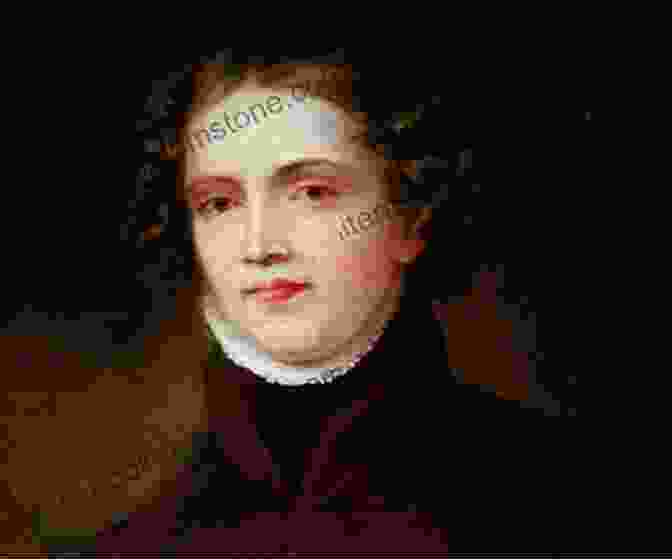 Anne Lister
Anne Lister Bob Mayer
Bob Mayer Annie Ernaux
Annie Ernaux Peter Watts
Peter Watts Blackhorse Mitchell
Blackhorse Mitchell Anthony Jones
Anthony Jones Zeneba Bowers
Zeneba Bowers Peter Turchi
Peter Turchi Ashley Antoinette
Ashley Antoinette Avery Grey
Avery Grey Bella Martin
Bella Martin R G Collingwood
R G Collingwood Ernst Lehner
Ernst Lehner Kris Jenner
Kris Jenner Catherine E Mckinley
Catherine E Mckinley John Scarne
John Scarne Michael Tucker
Michael Tucker Phil Doran
Phil Doran Gayatri Gopinath
Gayatri Gopinath Mary Kay Ricks
Mary Kay Ricks Nancy Nicholson
Nancy Nicholson Emma Read
Emma Read Satyajit Ray
Satyajit Ray Anne Moody
Anne Moody Tia Williams
Tia Williams Berlitz Publishing
Berlitz Publishing Paul Holt
Paul Holt Beata Lubas
Beata Lubas Jan Cohen Cruz
Jan Cohen Cruz Scott Hughey
Scott Hughey George Huppert
George Huppert Peter Jazwinski
Peter Jazwinski Ashley Bristowe
Ashley Bristowe August Wilson
August Wilson Antoinette Nora Claypoole
Antoinette Nora Claypoole James D Umbach
James D Umbach Clare Therese Gray
Clare Therese Gray Deborah D Douglas
Deborah D Douglas Aubrey A Jones
Aubrey A Jones Steven M Nolt
Steven M Nolt Samantha Hahn
Samantha Hahn Heather Vogel Frederick
Heather Vogel Frederick Paul Brinkley Rogers
Paul Brinkley Rogers Axel Hacke
Axel Hacke Anne Morrow Lindbergh
Anne Morrow Lindbergh Peter F Hamilton
Peter F Hamilton John H Clark Iii
John H Clark Iii Christopher Sieving
Christopher Sieving James Maskalyk
James Maskalyk Donald Murray
Donald Murray Elizabeth Friendship
Elizabeth Friendship Robert V Camuto
Robert V Camuto Approach Guides
Approach Guides Hanife Hassan O Keeffe
Hanife Hassan O Keeffe Chris Weyers
Chris Weyers Eugenio Barba
Eugenio Barba Cynthia Winton Henry
Cynthia Winton Henry Billy Connolly
Billy Connolly Nora Roberts
Nora Roberts Patrick Rothfuss
Patrick Rothfuss Colonial Williamsburg Foundation
Colonial Williamsburg Foundation Graham Fraser
Graham Fraser Tracy Birdsall
Tracy Birdsall Rebecca Keegan
Rebecca Keegan Antony Kamm
Antony Kamm Scott Lerman
Scott Lerman Carolyn Jenkins
Carolyn Jenkins Mark Edward Harris
Mark Edward Harris Madeleine Walker
Madeleine Walker Diana Kupershmit
Diana Kupershmit Geoff Schumacher
Geoff Schumacher Robert Graysmith
Robert Graysmith Nancy Lee Mccaskill
Nancy Lee Mccaskill Colin Angus
Colin Angus Austin Howe
Austin Howe Ashley Mahlberg
Ashley Mahlberg Haruki Murakami
Haruki Murakami Arlo Adams
Arlo Adams Jesse Martin
Jesse Martin Anton Treuer
Anton Treuer Gene D Phillips
Gene D Phillips George Bird Grinnell
George Bird Grinnell Kathy Kolbe
Kathy Kolbe Annemieke Mein
Annemieke Mein Jonathan Strahan
Jonathan Strahan Anne Sebba
Anne Sebba Elizabeth Bard
Elizabeth Bard Karl Ove Knausgaard
Karl Ove Knausgaard Obed Silva
Obed Silva Luke Nguyen
Luke Nguyen Chris Saper
Chris Saper Marina Garone Gravier
Marina Garone Gravier Valerie Biden Owens
Valerie Biden Owens Mary Renault
Mary Renault Rebecca Serle
Rebecca Serle Bwwm Love
Bwwm Love Arthur Murray
Arthur Murray Asali Solomon
Asali Solomon Anne Rice
Anne Rice Haben Girma
Haben Girma Joe Abercrombie
Joe Abercrombie Julie Nelson Davis
Julie Nelson Davis Edgar Degas
Edgar Degas Mackinley Helm
Mackinley Helm Anne Manera
Anne Manera Jason Frye
Jason Frye Tony Randgaard
Tony Randgaard Tony Hillerman
Tony Hillerman Anne De Courcy
Anne De Courcy De Andrea
De Andrea David Deal
David Deal Elise Darcy
Elise Darcy Lou Sutton
Lou Sutton Mary Maccracken
Mary Maccracken Jane Yolen
Jane Yolen Edward Achorn
Edward Achorn D Levesque
D Levesque Chris A Norton
Chris A Norton Matthew Jm Carpenter
Matthew Jm Carpenter Suzanne Fredericq
Suzanne Fredericq Julian Stallabrass
Julian Stallabrass Anthony Slide
Anthony Slide Paul Steinberg
Paul Steinberg Pamela Des Barres
Pamela Des Barres H Dolmetsch
H Dolmetsch Pico Iyer
Pico Iyer Dave Bartell
Dave Bartell Doug Scott
Doug Scott Doris Marjorie Moore
Doris Marjorie Moore Zalmay Khalilzad
Zalmay Khalilzad Peter James West
Peter James West Tim Gunn
Tim Gunn
Light bulbAdvertise smarter! Our strategic ad space ensures maximum exposure. Reserve your spot today!
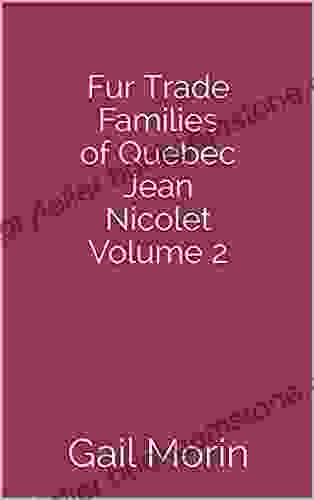
 Fabian MitchellPioneering Families of the Fur Trade: A Journey into the Heart of Quebec's...
Fabian MitchellPioneering Families of the Fur Trade: A Journey into the Heart of Quebec's...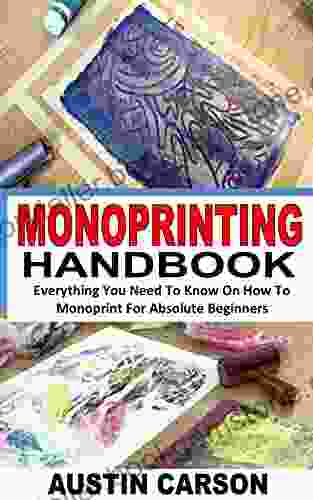
 Henry Wadsworth LongfellowEverything You Need to Know on How to Monoprint for Absolute Beginners
Henry Wadsworth LongfellowEverything You Need to Know on How to Monoprint for Absolute Beginners Vincent MitchellFollow ·18.1k
Vincent MitchellFollow ·18.1k Howard BlairFollow ·16.9k
Howard BlairFollow ·16.9k Orson Scott CardFollow ·16.1k
Orson Scott CardFollow ·16.1k Ethan MitchellFollow ·13.5k
Ethan MitchellFollow ·13.5k Neil ParkerFollow ·7.7k
Neil ParkerFollow ·7.7k Jaime MitchellFollow ·12.3k
Jaime MitchellFollow ·12.3k Philip BellFollow ·3.1k
Philip BellFollow ·3.1k Elmer PowellFollow ·16.6k
Elmer PowellFollow ·16.6k
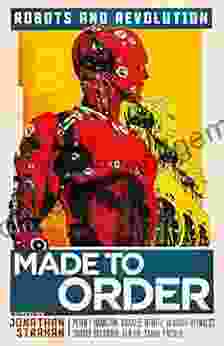
 Braden Ward
Braden WardMade to Order Robots and the Coming Revolution
Robots are becoming increasingly common...
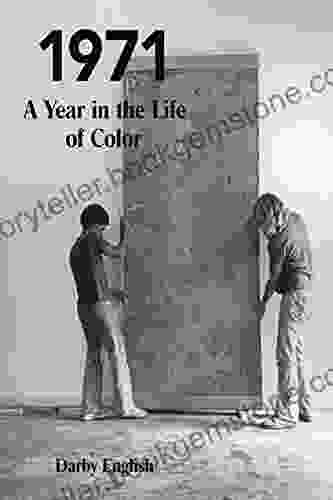
 Clay Powell
Clay Powell1971: A Year in the Life of Color
The year 1971 was a pivotal one for color....
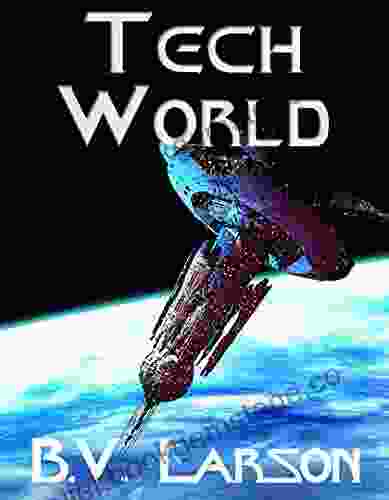
 Ralph Waldo Emerson
Ralph Waldo EmersonTech World's Undying Mercenaries: A Deep Dive into the...
In the ever-evolving landscape of the...
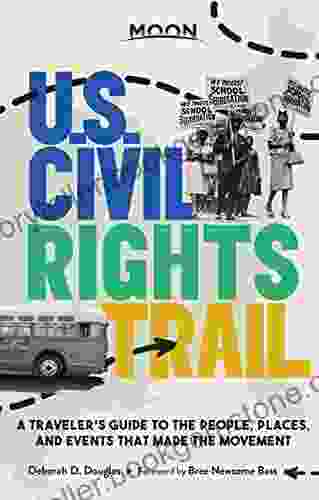
 Wade Cox
Wade CoxThe Ultimate Traveler's Guide to the People, Places, and...
Travel has always been a part of the human...
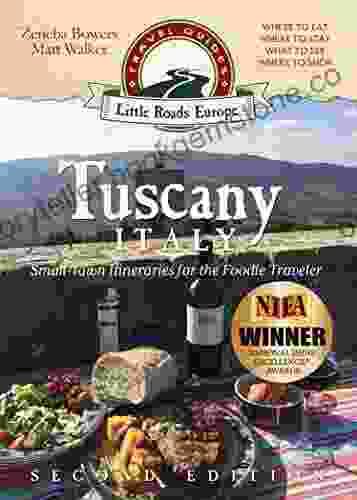
 Evan Simmons
Evan SimmonsA Comprehensive Guide: Uncovering Small Town Culinary...
: A Culinary Odyssey Beyond the City...
4 out of 5
| Language | : | English |
| File size | : | 18342 KB |
| Text-to-Speech | : | Enabled |
| Screen Reader | : | Supported |
| Enhanced typesetting | : | Enabled |
| Print length | : | 329 pages |
| Lending | : | Enabled |


